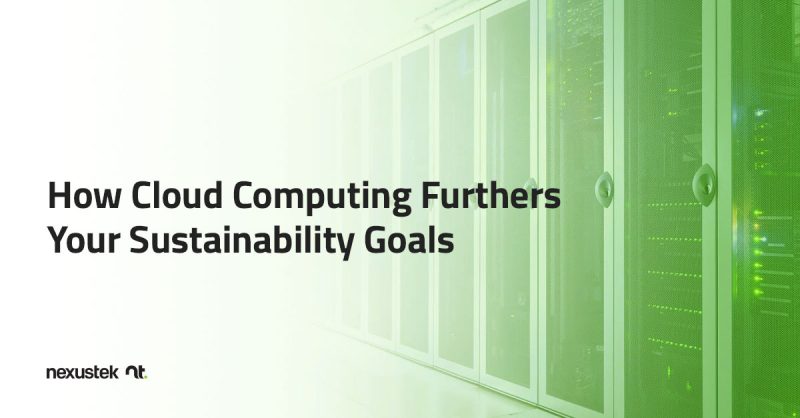READ TIME: 3 MIN

- April 27, 2022
How Cloud Computing Furthers Your Sustainability Goals
In contemporary society, consumers and businesses alike place increasing weight on the sustainability implications of a company’s practices. The pervasiveness of technologies to facilitate critical business functions has led to an explosion in demand for data processing, raising concerns about the cloud’s energy consumption and prompting the question: Is cloud computing better for the environment than on-premises IT infrastructure?
In short, the answer to this question is yes, and in this blog, we review current evidence related to cloud computing and sustainability.
Change in Energy Demand Over Time
Early forecasts from a decade ago suggested that the expansive data centers used by cloud providers would drive up energy consumption dramatically. However, the overall changes in energy demand across all types of data centers—on-premises deployments and cloud—illustrate the efficiencies of cloud computing and modern equipment. From 2010 to 2018, the computing output of data centers worldwide increased by 6 times, but the corresponding energy consumption rose by only 6%1. These efficiencies are attributed to widespread movement from on-premises servers to cloud computing, along with more efficient equipment.
More Efficient Equipment in Cloud Data Centers
Because cloud providers must cover the costs of running an enormous quantity of machines, they are incentivized to seek out efficiencies. For this reason, cloud providers are more likely than on-premises server rooms to use the most recent, energy-efficient hardware. This has significant implications for energy consumption; compared with servers from 10 years ago, modern servers use about 25% of the energy on a per-output basis2. Public cloud providers also take specific measures to reduce the total amount of energy their facilities consume, using tailored chips, high-density data storage, ultrafast networking, and airflow systems that are specially designed for the environment.
Location of Cloud Facilities
Another contributor to energy efficiency of cloud data centers is location. Public cloud facilities are often deliberately located closer to energy sources, such as hydroelectric dams in the Pacific Northwest. This proximity to sources of energy reduces the amount of energy loss during transmission. Some cloud providers may also locate cloud facilities in colder areas to reduce the need for cooling. Companies that choose to maintain their own private, on-premises servers are less likely to have the same level of control over location, resulting in a net higher usage of energy on a per-output basis.
Efficiencies Created by Higher Usage Levels
Cloud providers are also able to attain greater efficiencies due to their higher levels of server usage. This is because running a single server at a higher level is more efficient than running multiple servers at the lower levels that are typical for smaller businesses. Increasing the computing output of a single server by a factor of 4 only increases its energy consumption by a factor of 1.7, illustrating the comparative efficiency of using a single server at higher levels3. Through use of demand forecasting and multitenancy, cloud providers can serve a mix of customers whose use patterns balance each other out. This avoids spikes in usage that are followed by periods of wasteful idle time, as often occurs in on-premises server rooms.
As a provider of cloud services that utilizes cloud data centers, including a Sustainability Certified data center in Las Vegas, NexusTek can help you achieve your sustainability goals.
References:
- Lohr, S. (2020, February 27). Cloud computing is not the energy hog that had been feared. New York Times. https://www.nytimes.com/2020/02/27/technology/cloud-computing-energy-usage.html#:~:text=Its%20data%20centers%20on%20average,of%20the%20world’s%20electricity%20output.
- Knight, W. (2020, February 27). Data centers aren’t devouring the planet’s electricity—yet. Wired. https://www.wired.com/story/data-centers-not-devouring-planet-electricity-yet/
- (2020). The carbon benefits of cloud computing: A study on the Microsoft Cloud in partnership with WSP. https://www.microsoft.com/en-us/download/details.aspx?id=56950
